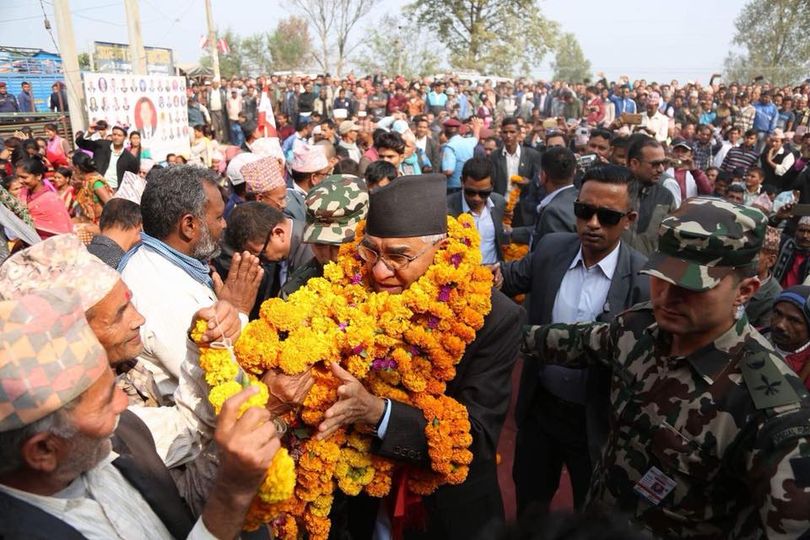Nepal’s Common Minimum Programme: Falling Short on Foreign Policy Expectations
Amit Ranjan
13 August 2021Summary
The recently released Common Minimum Programme touches on several important foreign policy priorities for Nepal. However, it lacks substance and avoids making specific recommendations. Apart from creating uncertainty, it has exposed the government to political attacks from the opposition.
On 8 August 2021, the Sher Bahadur Deuba-led coalition government in Nepal unveiled the Common Minimum Programme (CMP). The ruling coalition’s task force to draft the CMP was led by Nepali Congress General Secretary, Purna Bahadur Khadka. The CMP includes a vision on the priorities of the coalition government such as promoting the country’s national interests; implementing federalism; strengthening the federal democratic system, and law and order situation; ensuring good governance and ethical conduct; completing the peace process; and focusing on economic policy and programmes.
On Nepal’s foreign policy, the 14-page document stresses on securing the country’s interests. It states that the government will use diplomatic channels for the peaceful resolution of boundary disputes with India at Kalapani, Limpiyadhura and Lipulekh. Notably, India and Nepal witnessed a tensed bilateral relationship after Kalapani was shown as a part of India in its updated map in 2019. India-Nepal boundary tensions escalated further after India’s Defence Minister Rajnath Singh inaugurated an 80-kilometre road to Mansarovar, a part of which, as claimed by Nepal, is built on its land in Lipulekh. Amidst the tensions, then-Nepali government released a revised political map showing Kalapani, Limpiyadhura and Lipulekh as Nepali territories. India termed Nepal’s act as “unjustified cartographic assertion”. However, bilateral engagements in the later part of 2020 and afterwards have reduced the boundary-related tensions between the two countries.
The CMP also touches on the bilateral and multilateral use of water resources in national interest, and the effective implementation of a water resource policy. Since the return of democracy in 2008 and an elected constituent assembly declared the country a federal democratic republic, there has been a rise in anti-dam activism in Nepal. Two external actors – India and China – are largely engaged in Nepal in this respect. Unlike India, China is a relatively new entrant in Nepal’s water and hydropower sector. Sino-India rivalry for influence in Nepal has impacted the country’s domestic, foreign and hydropower policies. For example, in 2017, the Nepal government under Deuba, in what was largely considered a “pro-India” stance, cancelled a deal with the Chinese company Gezhouba to build Budhi Gandaki hydroelectric project. The decision was, however, reversed after K P Oli, largely seen as “China-friendly”, became prime minister in 2018.
Under the CMP, the country will mobilise foreign aid through the budgetary system in the areas of national priority, including the construction of physical infrastructure. It is not certain if this includes the Millennium Challenge Corporation (MCC) which Nepal signed with the United States (US) in September 2017. It has yet to be ratified by the Nepali parliament. Under the MCC, the US government has agreed to provide US$500 million (S$676 million) in grants while Nepal will contribute US$130 million (S$175 million) for projects which prioritise energy and roadways. The MCC has met with opposition from Nepali parliamentarians who see it as part of the US’ Indo-Pacific strategy of constraining China.
The CMP also touches on treaties and agreements that the government finds unfavourable to Nepal’s interests. While no specific treaty is mentioned in the CMP, one of the treaties that Nepal has desired to review is the India-Nepal Friendship Treaty of 1950. In January 2021, Nepal’s then-Foreign Minister, Pradeep Kumar Gyawali, in an interaction with journalists during his visit to New Delhi, said that “…many changes have taken place in both countries. So to reflect these changes, we want to review it and revise it [India-Nepal Friendship Treaty of 1950] and develop new documents so that they can reflect the realities.” Shyam Saran, former Indian Ambassador to Nepal and former Foreign Secretary, observes that in the past, the Nepali side has raised the issue of revision of friendship treaty with India mainly as a political rhetoric for domestic constituency. It has never engaged India in serious negotiations over it.
Launching an attack on the CMP, former Nepal prime minister and Chairperson of the Communist Party of Nepal-Unified Marxist Leninist, Oli, questioned the resolve of Deuba’s government to hold talks with India over Kalapani, Limpiyadhura and Lipulekh. He also asked the government about its plans regarding the report of the Eminent Persons’ Group on Nepal-India relations. Oli also questioned the “…unequal treaties that this government wants to scrap” as well as on the non-inclusion of the MCC in the CMP. He pressed the government on its decision on the MCC. It would be interesting to see the government’s position on the proposed agreement with the US.
Overall, the CMP highlights several important foreign policy priorities of the current government. However, it has steered clear of controversy and has provided the spirit rather than the substance in this respect. Its two big neighbours certainly loomed large on the articulation of its foreign policy imperatives in the document.
. . . . .
Dr Amit Ranjan is a Research Fellow at the Institute of South Asian Studies an autonomous research institute at the National University of Singapore. He can be contacted at isasar@nus.edu.sg. The authors bear full responsibility for the facts cited and opinions expressed in this paper.
Photo credit: Nepali Congress Facebook
-
 More From :
More From :
-
 Tags :
Tags :
-
 Download PDF
Download PDF



